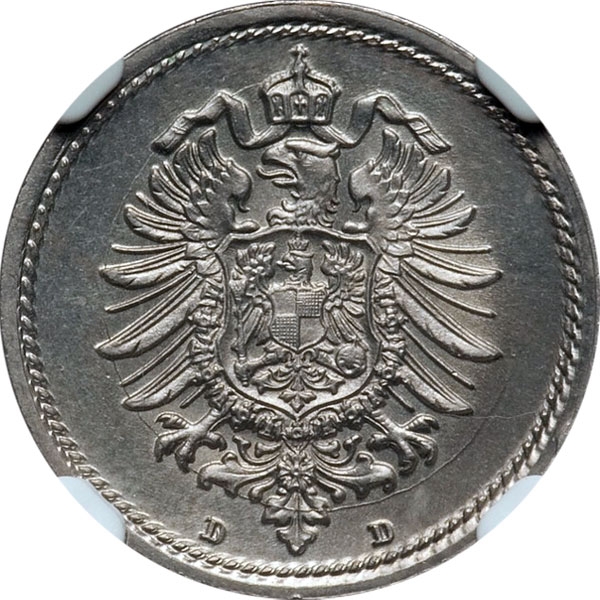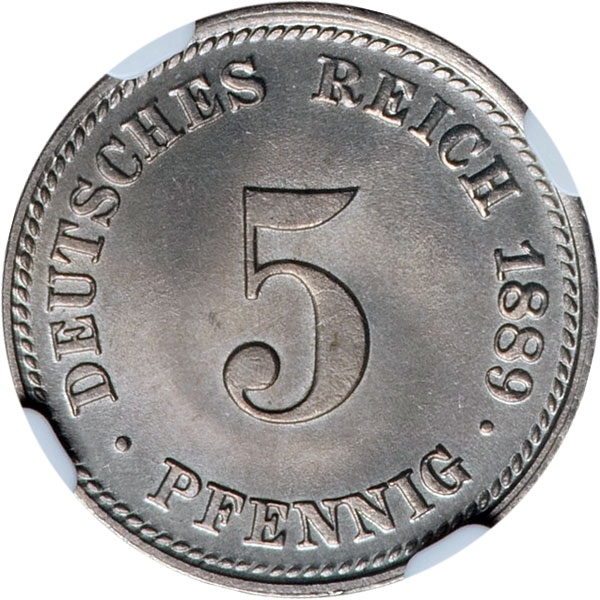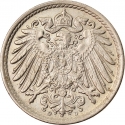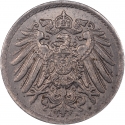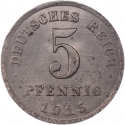You are about to finish your registration. Please check your mailbox (including spam folder). There should be a letter with a confirmation link. Check setting to make sure that your e-mail address is correct.
Send letter again
Obverse

|
The coat of arms of the German Empire (Reichsadler with shield on breast). Mintmarks near edge, below feet of eagle. D D |
|---|---|
Reverse

|
Large central numeral. The sate name and date at right around. DEUTSCHES REICH 1889 |
| Edge |
5 Pfennig
Large Shield
KM# 3
Characteristics
| Material | Cupronickel |
| Weight | 2.33 g |
| Diameter | 18.03 mm |
| Thickness | 1.12 mm |
| Shape |
|
| Alignment | Medal |
| Mints |
Bavarian Central Mint (D) Berlin State Mint (A) Darmstadt Mint (H) Frankfurt Mint (C) Hamburg Mint (J) Hanover Mint (B) Karlsruhe State Mint (G) Muldenhütten Mint (E) Stuttgart State Mint (F)
|
